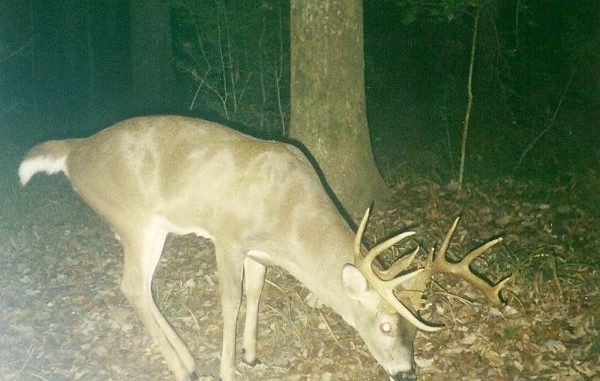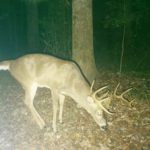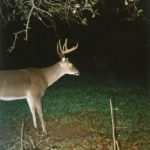
There are several simple ways a hunter can keep tabs on his deer herd in order to determine when the rut is going on.
Once scrape initiation has occurred and there are some fresh scrapes in the woods, locate a few that look like they will be used throughout the season and set a trail camera up on the scrape.
Several bucks will work the same scrape, and once the camera shows a buck visiting a scrape a couple of times during the day or consecutive visits to the scrape by a buck, the peak of scraping is probably on and should be followed in five to 10 days with the females beginning to cycle and ovulate.
Ovulation can be documented by collecting female reproductive tracts and examination of the ovaries.
In Areas 2, 3, 7 and 8 hunters would probably find ovulated does when the season opens, and as the season progresses will find does with uteruses that are filled with embryonic fluid. Obviously those doe are pregnant, and collection of these reproductive tracts should provide the hunter with a breeding date.
The technique for doing this is in the literature, but probably it would be best to work with your local wildlife biologist.
Hunters in Areas 1 and 6 would be able to see ovulation as it occurs during the season, but because much of the breeding occurs in January in these areas. That means visible embryos are not too common.
A deer collection conducted by LDWF a couple of months later would be necessary to obtain exact breeding dates. The ovulation information could be easily obtained; determining when the first round of breeding occurred would tell you that, one month later, the second round will occur and aid in planning hunts.
Information about productivity begins in the uterus, and it is always desirable to have twin embryos and fetuses. This information tells you that the physical condition of the deer is good and she is able to cycle and breed.
Now, two embryos in the uterus does not necessarily equate to two new deer on the ground; there is a lot of time and energy that must be spent for this to become reality, but it is a start.
Observations of does and fawn numbers in the early season will greatly aid in providing information about fawn production and fawn survival. If you find does with two embryos early in the season and then see does with two fawns in October and November, odds are you’re not suffering with productivity and fawn-depredation issues.




